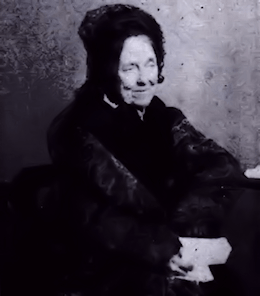Textus Receptus Bibles
Julia E. Smith Translation 1876
| 1:1 | Paul, and Silvanus, and Timothy, to the church of the Thessalonians in God the Father and the Lord Jesus Christ: Grace to you, and peace, from God our Father, and the Lord Jesus Christ. |
| 1:2 | We return thanks to God always for you all, making remembrance of you in our prayers continually; |
| 1:3 | Remembering your work of faith, and fatigue of love, and patience of hope of our Lord Jesus Christ, before God and our Father; |
| 1:4 | Knowing, brethren beloved, of God your selection. |
| 1:5 | For our good news was not to you in word only, but also in power, and in the Holy Spirit, and in much complete certainty; as we know what we were among you for your sake. |
| 1:6 | And ye were imitators of us, and of the Lord, having received the word in much pressure, with joy of the Holy Spirit: |
| 1:7 | So that ye were types to all believing in Macedonia and Achaia. |
| 1:8 | For from you sounded forth the word of the Lord not only in Macedonia and Achaia, but also in every place your faith towards God went out; so that we have no need to speak any thing. |
| 1:9 | For they themselves proclaim of us what entrance we have to you, and how ye turned to God from images to serve the living and true God; |
| 1:10 | And to wait for his Son from the heavens, whom be raised from the dead, Jesus, saving us from coming wrath. |

Julia E. Smith Translation 1876
The Julia Evelina Smith Parker Translation is considered the first complete translation of the Bible into English by a woman. The Bible was titled The Holy Bible: Containing the Old and New Testaments; Translated Literally from the Original Tongues, and was published in 1876.
Julia Smith, of Glastonbury, Connecticut had a working knowledge of Latin, Greek and Hebrew. Her father had been a Congregationalist minister before he became a lawyer. Having read the Bible in its original languages, she set about creating her own translation, which she completed in 1855, after a number of drafts. The work is a strictly literal rendering, always translating a Greek or Hebrew word with the same word wherever possible. Smith accomplished this work on her own in the span of eight years (1847 to 1855). She had sought out no help in the venture, even writing, "I do not see that anybody can know more about it than I do." Smith's insistence on complete literalness, plus an effort to translate each original word with the same English word, combined with an odd notion of Hebrew tenses (often translating the Hebrew imperfect tense with the English future) results in a translation that is mechanical and often nonsensical. However, such a translation if overly literal might be valuable to consult in checking the meaning of some individual verse. One notable feature of this translation was the prominent use of the Divine Name, Jehovah, throughout the Old Testament of this Bible version.
In 1876, at 84 years of age some 21 years after completing her work, she finally sought publication. The publication costs ($4,000) were personally funded by Julia and her sister Abby Smith. The 1,000 copies printed were offered for $2.50 each, but her household auction in 1884 sold about 50 remaining copies.
The translation fell into obscurity as it was for the most part too literal and lacked any flow. For example, Jer. 22:23 was given as follows: "Thou dwelling in Lebanon, building as nest in the cedars, how being compassionated in pangs coming to thee the pain as in her bringing forth." However, the translation was the only Contemporary English translation out of the original languages available to English readers until the publication of The British Revised Version in 1881-1894.(The New testament was published in 1881, the Old in 1884, and the Apocrypha in 1894.) This makes it an invaluable Bible for its period.